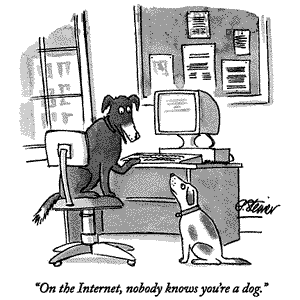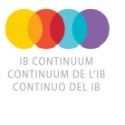How to evaluate websites
Information is all around us and it becomes a challenge to find relevant information issued from reliable websites.
Using the following criteria can help you to critically evaluate what you find before you use it.
Who What When Where Why How
WHO is responsible for the information? (Authority/ Credibility)
- Can you locate the author’s name?
- Is the author well known in his field?
- Are the author’s qualifications listed (education, occupation, experience…).
- Who actually published the page? Is there contact information?
Some attention should be paid to the following points:
- How detailed is the information?
- Is the language free of emotion or highly emotional?
- The document refers to different points of view?

What does the information included? (Accuracy and Reliability)
- Is the information accurate based on what you already know?
- Has the information been reviewed or refereed?
- Charts and Graphs are easy to read and are clearly labelled?
- Is the content free of typographical and grammar errors?
When was the site created? (CURRENCY)
- Can you find the date the site was created or last updated?
- All sites suggested works without linking problems (Links Moved, blended…)?
- Does the page open easily and quickly?
From Where are you getting your information? (Purpose and Domain)_
o What is the URL extension?
.com is usually used for commercial purposes;. Gov and .edu are usually reliable to present accurate information
o Why was the page put on the web? Is the purpose to inform, persuade, sell, satire or parody, other?
Check the URL domain:
.com = Commercial sites (vary in their credibility)
.gov = Government site (The best internet source)
.org = organization, often non-profit
.edu = School or university site
= Personal site (use with careful analysis)
How is the site put together? (Appearance and navigation of the website)
The design quality of a website is an important field when determining whether to trust information on that site and decide what you can easily access:
- Is the site well organized?
- Is the layout easy to follow?
- Are there spelling & grammatical errors?
- Do the graphics and the colors enhance the content?
- Are links clearly visible?
Why should I use this info? (Usefulness of the information)
- Does the information on this site meet all my needs?
- Is the information up to date?
- Is this website is better than other websites that I’ve visited? Why?
Citations and Bibliography
Across all IB programmes, students must behave honestly and with integrity. According to the IB Guide, “Academic Honesty must be seen as a set of values and skills that promote personal integrity and good practice in teaching, learning and assessment” (IB Academic Honesty Guide).
Thus any malpractice or academic dishonesty will lead to the consequences outlined in the Wellspring Learning Community Academic Honesty Policy, 2014.
Why and when should we cite?
- Proper citing is a key element to avoid plagiarism and to show respect for the work of others (IB Effective citing and referencing 2014)
- It allows the readers to track down the original work.
- When we use other people’s words, work and ideas, it is essential to distinguish between your work and the work of others. Any reader would benefit from seeing just how the other person’s work contributes to yours.
- When using someone else’s work in your own –whether you’re quoting, summarizing or paraphrasing, you need to give credit where credit is due.
- Basic and common knowledge within a field or subject does not need to be acknowledged. However, if we are in doubt whether the source material is common knowledge or not, we should cite!
You can inspire from the work of others by using these three strategies’. In all these strategies you have to cite!
- Quoting is the using of another writer’s words, even when using only a short phrase. For direct quotations, the quoted material in quotation marks should enclose citations.
- Paraphrasing is rephrasing the words of an author. When you paraphrase, you rework the source’s ideas, words, phrases and sentence structures with your own. Like quotations, paraphrased material must be followed with in-text documentation and cited on your Works-Cited page.
- Summarizing
is putting the main idea(s) of one or several writers into your own
words. Summaries are significantly shorter than the original material.
Again, it is necessary to attribute summarized ideas to their original
sources. Any of the author’s key terms must be put in “quotation marks”
or italics.
How to cite?
There are different ways of referencing styles: APA, Chicago, MLA…
The consistency in using one citation style is an extremely important element to consider.
Wellspring Learning Community has been adopted the MLA for all assignments made by the students and all the students are required to cite accordingly.
Each piece of material is described differently as the bibliographic information are different upon the source of information: Citing books is different than citing videos or articles etc.
Checklist for preparing the Final Draft of the Research Paper
Subject
- Title reveals the content of the assignment and fosters the curiosity of the reader.
- The introduction proceeds clearly from the opening of the thesis.
Sources
- I have evaluated the sources adequately.
- To avoid plagiarism, I have given credit to others by citing the sources, summarizing, quoting and by paraphrasing properly.
- I have consistently used MLA citation style.
Organization
- My ideas are clear and my paper shows an organized progression of thoughts.
- My writing is coherent
Writing
- I have used concrete and concise and straightforward language.
- I have avoided using first-person pronouns and the passive voice.
- Spelling, punctuation and other writing mistakes have been eliminated
Form
- The visual form of the paper makes my research paper readable and organized.
I have given my paper a final proofreading.
Works Cited
Brookshear, J. Glenn and Dennis Brylow. Computer Science: An Overview. 3rd ed. USA: Pearson Education, 2015.
Bredes, Bonnie. “Website Evaluation: How do I know if the information I found is good enough.” Web. 12 January 2015.
http://www.cmschools.org/secondarylibrary/sites/default/files/WebsiteEvaluation2007Show.pps
“Evaluating websites.” International college. Web. 12 January 2015. http://www.ic.edu.lb/page.cfm?p=566
“Evaluating Web Sites: Criteria and Tools.” Cornell University Library. Web. 12 January 2015. https://olinuris.library.cornell.edu/ref/research/webeval.html
Evaluating Wikipedia: Tracing the evolution and evaluating the quality of articles.” Wikimedia foundation. Web. 15 January 2015.http://upload.wikimedia.org/wikipedia/commons/5/52/Evaluating_Wikipedia_brochure.pdf
“Help searching Library databases & online resources.” University of Edinburgh. Web. 12. January 2016. http://www.ed.ac.uk/information-services/library-museum-gallery/finding-resources/library-databases/databases-overview/databases-search
“How to evaluate information found on the internet.” LAU Libraries. Web. 9 January 2015. http://libraries.lau.edu.lb/ help/evaluating-info.php.
“How to evaluate a Wikipedia article.” Web. 9 January 2015.
IB. “Effective citing and Referencing.” http://www.ibo.org/globalassets/digital-tookit/brochures/effective-citing-and-referencing-en.pdf
Laberta, Catherine. Computers are your Future. USA: Pearson Education International, 2012.
Kemper, Dave, Patrick Sebranek, and Verne. Write Source. USA:
“MLA Formatting and Style Guide.” Purdue Online Writing Lab,https://owl.english.purdue.edu/owl/resource/747/01
University of Illinois Library ‘Academic Integrity and Plagiarism’ University of Illinois at Urbana- Champaign. http://www.library.illinois.edu/learn/research/academicintegrity.html [Las Accessed 29/05/2014] Web
Vester, Maggie. “Evaluating websites for learners.” Web.12 january 2015. http://www.slideshare.net/maggiev/evaluating-websites-for-learners?qid=b407940f-430e-4bfe-8d72-1de8653c78de&v=default&b=&from_search=1
“Web Research Guide: Evaluating a Web Site.” Web. 9 January 2015. https://www.classzone.com/books/research_guide/evaluating_web_sites_guide.pdf
Winkler, Anthony C. Writing the research paper: A Handbook. 8th ed. USA: Cengage Learning, 2012.
“9steps writing guide!” Questia Database.


